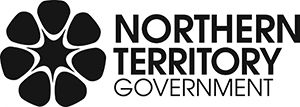Current identified areas of support
Authorised officers are noting similar trends across services through March to April 2025.
The current trends in compliance and monitoring visits relate to services not meeting the below low and regulations:
- Section 165 – Offence to inadequately supervise children
- Recently QECNT have seen a rise in the number of incidents of children being left unsupervised within a service. The approved provider and nominated supervisor must ensure all children being educated and cared for by the service are adequately supervised at all times. Educator-to-child ratios alone do not achieve adequate supervision. Supervision is critical to the safety of children and helps to protect children from harm or hazards that may arise in their play and daily routines. Adequate supervision means: that an educator can respond immediately, particularly when a child is distressed or in a hazardous situation knowing where children are at all times and monitoring their activities actively and diligently. Educators should balance supervision and engagement by drawing on a range of skills such as positioning, using peripheral vision, and monitoring changes in noise and stress levels. This is the perfect time to ensure that policies and procedures regarding supervision are current, and that educators are implementing these practices.
- Regulation 123 – Educator to child ratios – centre-based services
- Services must ensure the minimum number of educators required to educate and care for children at a centre-based service is to be calculated in accordance with the following ratios –
- (a) for children from birth to 24 months of age – 1 educator to 4 children;
- (b) for children over 24 months and less than 36 months of age – 1 educator to 5 children;
- (c) for children aged 36 months of age or over (not including children over preschool age) – 1 educator to 11 children
- (d) for children over preschool age, 1 educator to 15 children
- Now is the time to ensure the service and educators reflect on:
- How staff arrangements ensure educator to child ratios are maintained at all times
- Consider what contingency plans and strategies are in place to ensure that educator to child ratios are maintained at all times, particularly during the busy morning drop off time when a large number of children arrive at a similar time
- Regulation 97 – Emergency and evacuation procedures
- QECNT have increasingly found on compliance and monitoring visits that the emergency and evacuation procedures do not meet all sub regulations that are required and listed within this regulation. The following sub regulations have been identified as not met across services
- (1)(a) instructions for what must be done in the event of an emergency
- (2) the approved provider of an education and care service must ensure that a risk assessment is conducted to identify potential emergencies that are relevant to the service
- (3)(a) the emergency and evacuation procedures are rehearsed every 3 months by the staff members, volunteers and children present at the service on the day of the rehearsal and the responsible person in relation to the service who is present at the time of the rehearsal
- (4) the approved provider of an education and care service must ensure that a copy of the emergency and evacuation floor plan and instructions are displayed in a prominent position near each exit at the education and care service premises, including a family day care residence and approved family day care venue
- Services may like to consider reviewing regulation 97 ensuring all sub regulation are met, including those listed above, to ensure that the requirements for emergency and evacuation procedures are met for the safety and wellbeing of children.
- Regulation 185 – Law and regulations to be available
- QECNT have increasingly found on compliance and monitoring visits that the National Law and National Regulations are not kept available at the service. The approved provider of an education and care service must ensure that a copy of the National Law and National Regulations is accessible at the education and care service premises at all times for use by nominated supervisors, staff members, volunteers, parents of children enrolled at the service and any person seeking to make use of the service.
- Services may like to consider:
- How a current copy of the National Law and National Regulations is available at the service
- How easily accessible the National Law and National Regulations are for nominated supervisors, staff members, volunteers, parents and any person seeking to make use of the service
It is recommended that all services ensure they are familiar with the requirements of the regulations in relation to these areas. These requirements apply to all services approved under the Education and Care Services National Law, including OSHC and preschools.
The following links and fact sheets may assist:
- ACECQA
- Education and Care Services National Regulations
- Children (Education and Care Services National Law Application) Act 2010 No 104
- Reflecting on common OSHC supervision areas
- Active supervision in 6 steps
- Educator to child ratios
- Emergency and evacuation procedure policy guidelines
- National Law and National Regulations
Please note that these requirements apply to all services approved under the Education and Care Services National Law, including OSCH and preschools.
Give feedback about this page.
Share this page:
URL copied!